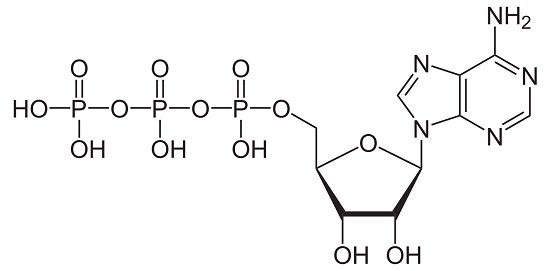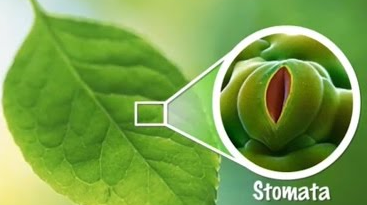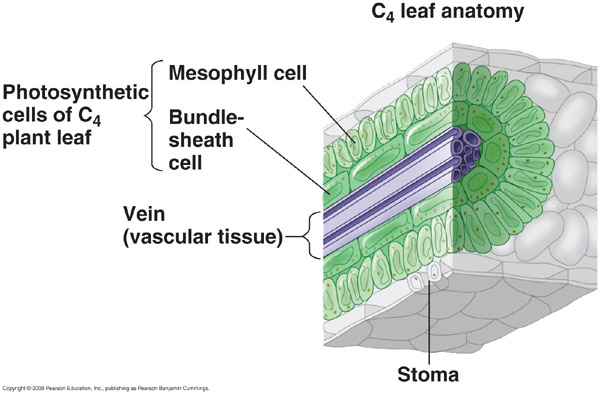A Summary
Photosynthesis is the process by which plants synthesize
, the energy currency of the cell. This is the chemical equation for the photosynthesis reaction:
Water and carbon dioxide are reactants, and it produces glucose and oxygen. Because of this, plants need sources of both carbon dioxide and water. They can obtain CO2 through their , or openings in the surface of leaves. This CO2 is produced by cellular respiration, which all animals perform to synthesize their ATP. But plants store water in their vacuoles, a large container for nutrients located in each cell.
And when the environment gets too hot or arid, some of this water begins to evaporate. To combat this issue, plants close their stomata when it gets too hot or sunny. However, the stomata also serves as a route that allows the products of photosynthesis to exit the cell. Because of this, oxygen, one of the products, begins to build up in the cell. And oxygen interferes with a part of photosynthesis known as the dark, or light independent reactions. Under normal conditions in the dark reactions, the carbon dioxide input is fixed into an organic molecule and then reduced to form two 3 carbon sugars that eventually combine to form glucose.
In carbon fixation, CO2 is fixed onto a 5 carbon sugar, Ribulose Bisphosphate (RuBP) by way of the enzyme, RuBP Carboxylase (rubisco). However, rubisco has an affinity for oxygen, so it is able to fix molecular oxygen molecules to RuBP, starting the alternative pathway of photorespiration. Photorespiration uses up organic molecules that carbon has been fixed into and wastes energy. In general, photorespiration reduces photosynthetic efficiency at low CO2 concentrations and high O2 concentrations.
The C4 metabolic pathway evolved as a more efficient metabolic pathway under those conditions. This new pathway allows plants to keep their stomata closed, preventing water from evaporating while continuing to perform photosynthesis at the same rate.
In this pathway, carbon is fixed using an enzyme with no oxygenase activity, preventing photorespiration from occurring. Additionally, the process occurs in two different types of cells. The initial carbon fixation occurs in a which then passes down an organic compound into a . There the organic compound is broken down, yielding CO2 as a byproduct. The Calvin Cycle then takes place in the bundle sheath cell, producing the 6 carbon sugar and recycling components of the light dependent reactions in photosynthesis. The reason why it is more efficient is because the bundle-sheath cells have very little access to oxygen, therefore preventing a build up of oxygen when the stomata is closed to decrease photosynthetic efficiency.
The series of reactions in the C4 metabolic pathway can be classified into four groups. The first is fixation, where the Carbon Dioxide is fixed with a 3 carbon molecule to form a 4 carbon molecule. In the two transport processes, products are transferred to the bundle-sheath cell from the mesophyll cell and back. In the decarboxylation reaction, the 4 carbon molecule is split into a carbon dioxide molecule along with a 3 carbon molecule. The CO2 molecule then enters the Calvin Cycle and completes the light independent process. And finally, the regeneration reactions regenerates the PEP in preparation for a new cycle.
6CO2 + 6H20 → C6H12O6 + 6O2
Water and carbon dioxide are reactants, and it produces glucose and oxygen. Because of this, plants need sources of both carbon dioxide and water. They can obtain CO2 through their , or openings in the surface of leaves. This CO2 is produced by cellular respiration, which all animals perform to synthesize their ATP. But plants store water in their vacuoles, a large container for nutrients located in each cell.
And when the environment gets too hot or arid, some of this water begins to evaporate. To combat this issue, plants close their stomata when it gets too hot or sunny. However, the stomata also serves as a route that allows the products of photosynthesis to exit the cell. Because of this, oxygen, one of the products, begins to build up in the cell. And oxygen interferes with a part of photosynthesis known as the dark, or light independent reactions. Under normal conditions in the dark reactions, the carbon dioxide input is fixed into an organic molecule and then reduced to form two 3 carbon sugars that eventually combine to form glucose.
In carbon fixation, CO2 is fixed onto a 5 carbon sugar, Ribulose Bisphosphate (RuBP) by way of the enzyme, RuBP Carboxylase (rubisco). However, rubisco has an affinity for oxygen, so it is able to fix molecular oxygen molecules to RuBP, starting the alternative pathway of photorespiration. Photorespiration uses up organic molecules that carbon has been fixed into and wastes energy. In general, photorespiration reduces photosynthetic efficiency at low CO2 concentrations and high O2 concentrations.
The C4 metabolic pathway evolved as a more efficient metabolic pathway under those conditions. This new pathway allows plants to keep their stomata closed, preventing water from evaporating while continuing to perform photosynthesis at the same rate.
In this pathway, carbon is fixed using an enzyme with no oxygenase activity, preventing photorespiration from occurring. Additionally, the process occurs in two different types of cells. The initial carbon fixation occurs in a which then passes down an organic compound into a . There the organic compound is broken down, yielding CO2 as a byproduct. The Calvin Cycle then takes place in the bundle sheath cell, producing the 6 carbon sugar and recycling components of the light dependent reactions in photosynthesis. The reason why it is more efficient is because the bundle-sheath cells have very little access to oxygen, therefore preventing a build up of oxygen when the stomata is closed to decrease photosynthetic efficiency.
The series of reactions in the C4 metabolic pathway can be classified into four groups. The first is fixation, where the Carbon Dioxide is fixed with a 3 carbon molecule to form a 4 carbon molecule. In the two transport processes, products are transferred to the bundle-sheath cell from the mesophyll cell and back. In the decarboxylation reaction, the 4 carbon molecule is split into a carbon dioxide molecule along with a 3 carbon molecule. The CO2 molecule then enters the Calvin Cycle and completes the light independent process. And finally, the regeneration reactions regenerates the PEP in preparation for a new cycle.


